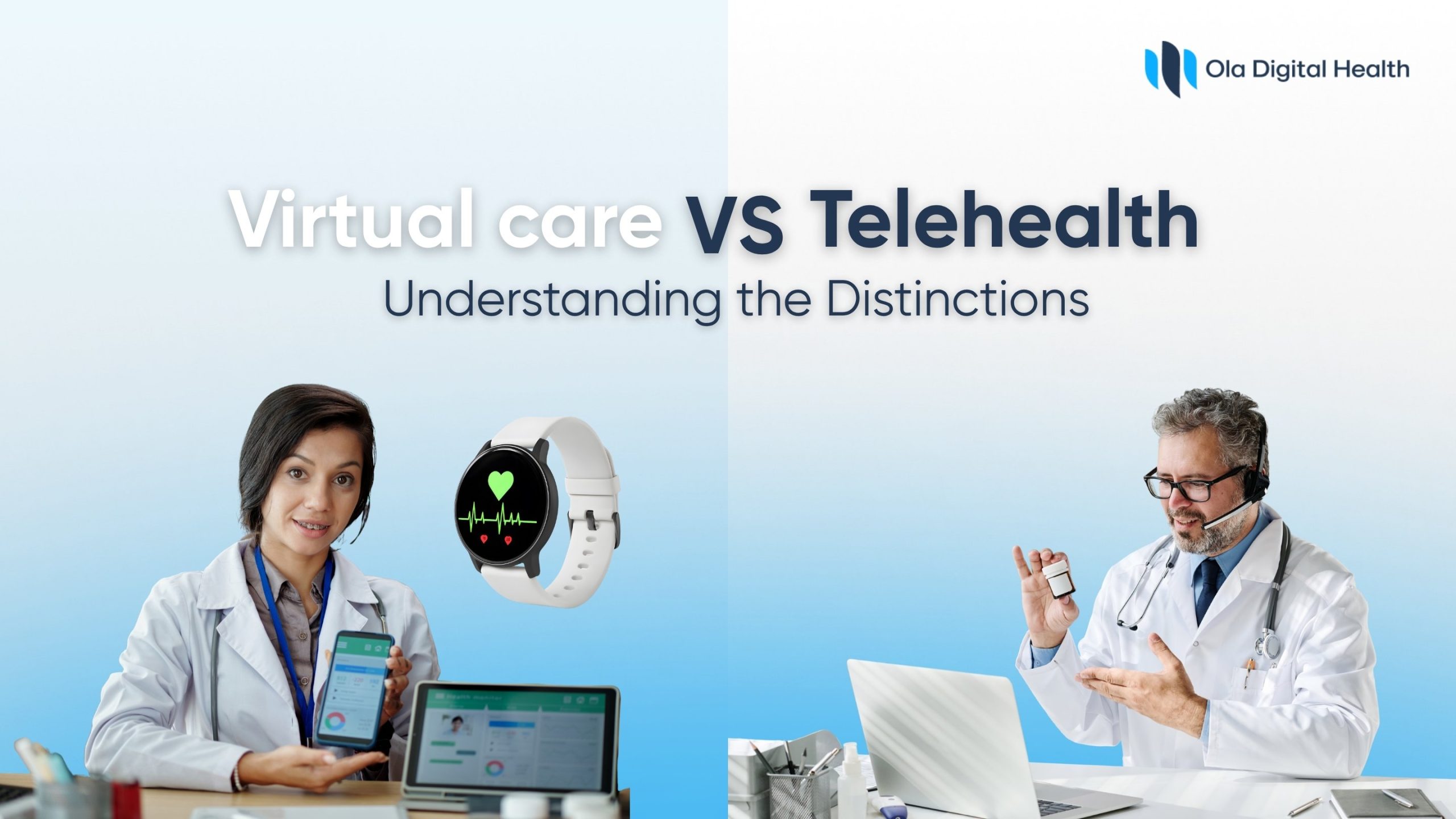Have you ever booked a video call with your doctor from the comfort of your couch? Or maybe you’ve received a prescription refill through an app—without stepping into a clinic?
If yes, you’ve already experienced the future of healthcare. But here’s the catch: was it telehealth or virtual care?
In today’s rapidly evolving medical landscape, these terms are often tossed around like synonyms. But in reality, they’re not the same—and if you’re a healthcare provider looking to upgrade your services, knowing the difference isn’t just helpful. It’s crucial.
Let’s break it down in simple terms—and explore how platforms like Ola Digital Health are making healthcare smarter, faster, and more human through cutting-edge digital health solutions.
What Is Telehealth?
Telehealth refers to the broad use of digital communication technologies to deliver healthcare services remotely. This includes not just doctor-patient video calls, but also remote diagnostics, patient education, administrative meetings, and health data exchange.
From dermatology consults to chronic condition check-ins, telehealth services have transformed access to care—especially in rural or underserved areas. According to a McKinsey report, telehealth usage has stabilized at levels 38X higher than before the pandemic, demonstrating its staying power in modern healthcare models.
What Is Virtual Care?
Virtual care is a subset of telehealth, focusing specifically on the direct clinical interactions between a provider and a patient through virtual means. It’s essentially the “care” part of telehealth—covering appointments, diagnostics, treatment plans, and follow-ups conducted entirely online.
Whereas telehealth can include non-clinical functions, virtual healthcare is purely about delivering medical expertise and decisions remotely. Think of it as your virtual clinic—where care, not just communication, happens.
Key Differences Between Virtual Care and Telehealth
| Feature | Telehealth | Virtual Care |
| Scope | Broad – includes administrative and non-clinical services | Narrow – focused on clinical diagnosis and treatment |
| Users | Providers, administrators, educators, patients | Primarily providers and patients |
| Examples | Staff meetings, health education, digital records | Video consults, prescription management, symptom checks |
Understanding this difference helps clinics choose the right telehealth platform to meet their needs. If you’re seeking full patient management, including remote patient monitoring, virtual care solutions should be the focus.
Why This Matters for Clinics and Providers
As more patients embrace digital health, clinics must adopt the right tools that align with their services. Misunderstanding the difference between telehealth and virtual care could lead to poor platform adoption, compliance issues, or underutilized services.
A robust telehealth platform should offer both capabilities—supporting non-clinical administrative workflows and high-quality virtual healthcare experiences.
How Ola Digital Health Helps Bridge the Gap
At Ola Digital Health, we don’t just offer a generic telehealth solution—we build scalable, secure, and customizable platforms that bring virtual care to life. Whether it’s enabling remote patient monitoring, automating prescription fulfillment, or delivering high-touch telehealth services, our platform empowers clinics to grow smarter in the digital era.
With Ola’s white-label, plug-and-play solution, you can brand the patient experience as your own—without investing years in tech development. Whether you’re a peptide clinic, HRT provider, or functional medicine specialist, we help you meet the modern patient where they are: online.
In Summary
Telehealth is the broader umbrella. Virtual care is the clinical core.
Both are essential in the digital health transformation.
But with a partner like Ola Digital Health, you don’t have to choose. You get the full picture—optimized.
Get in touch!








